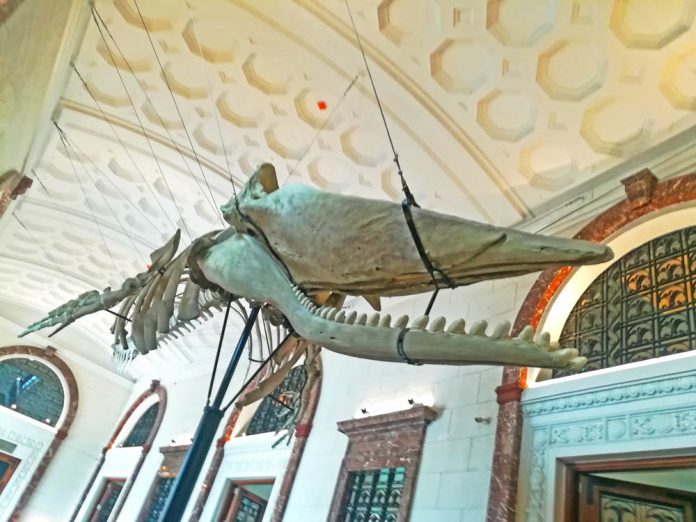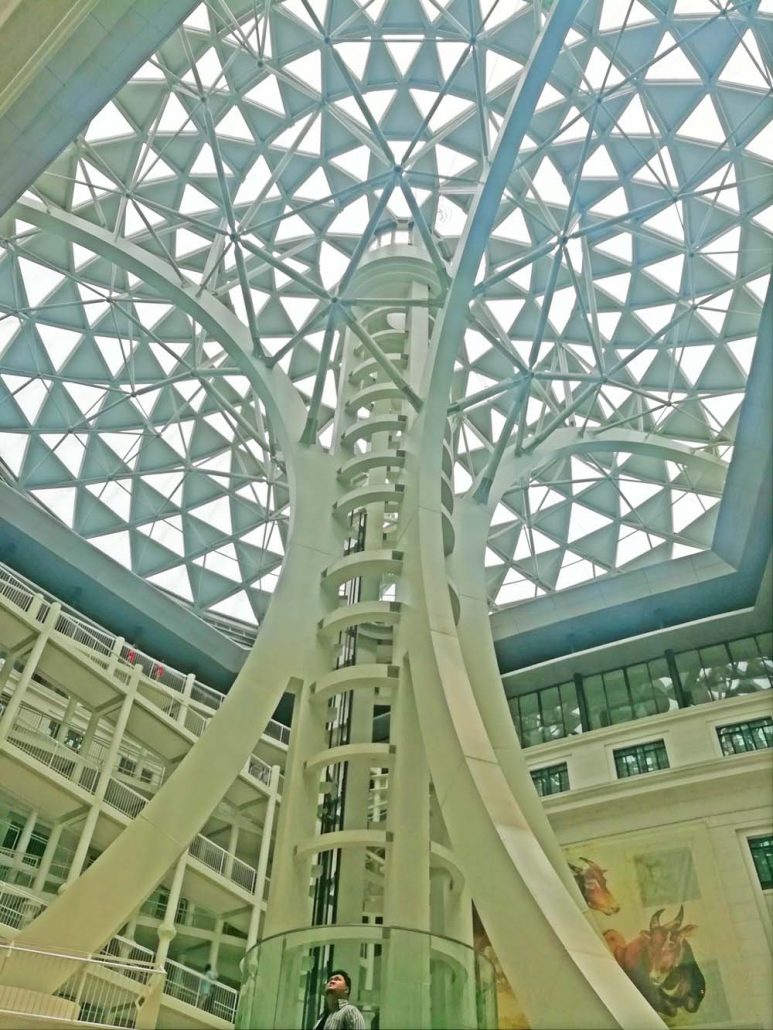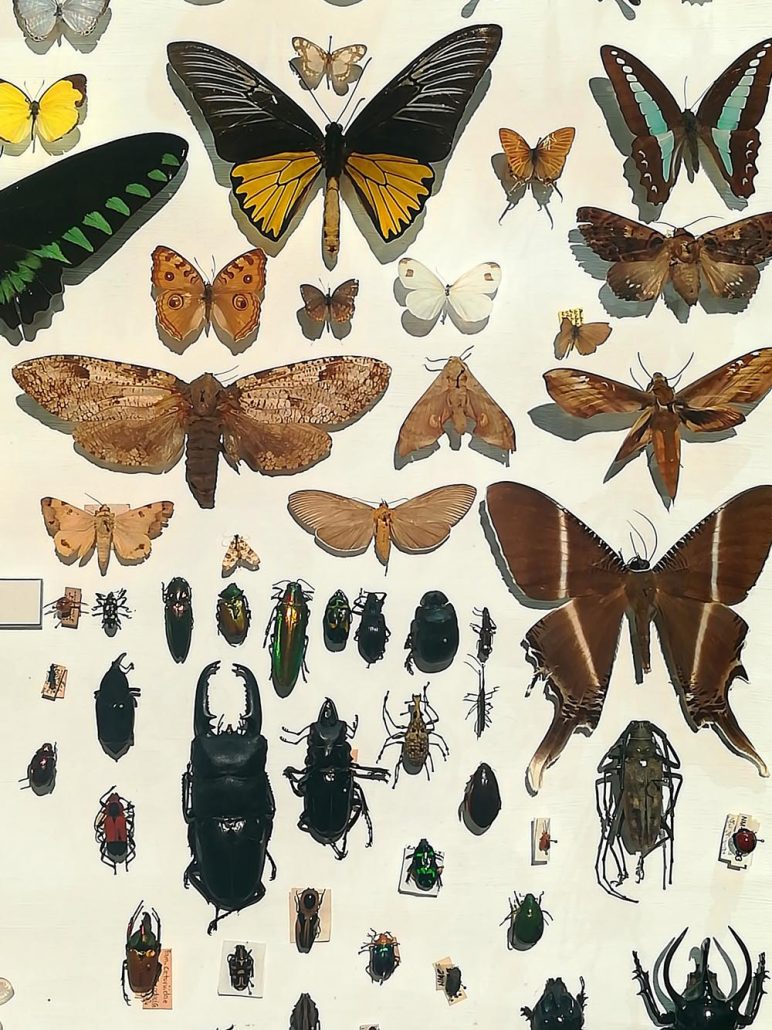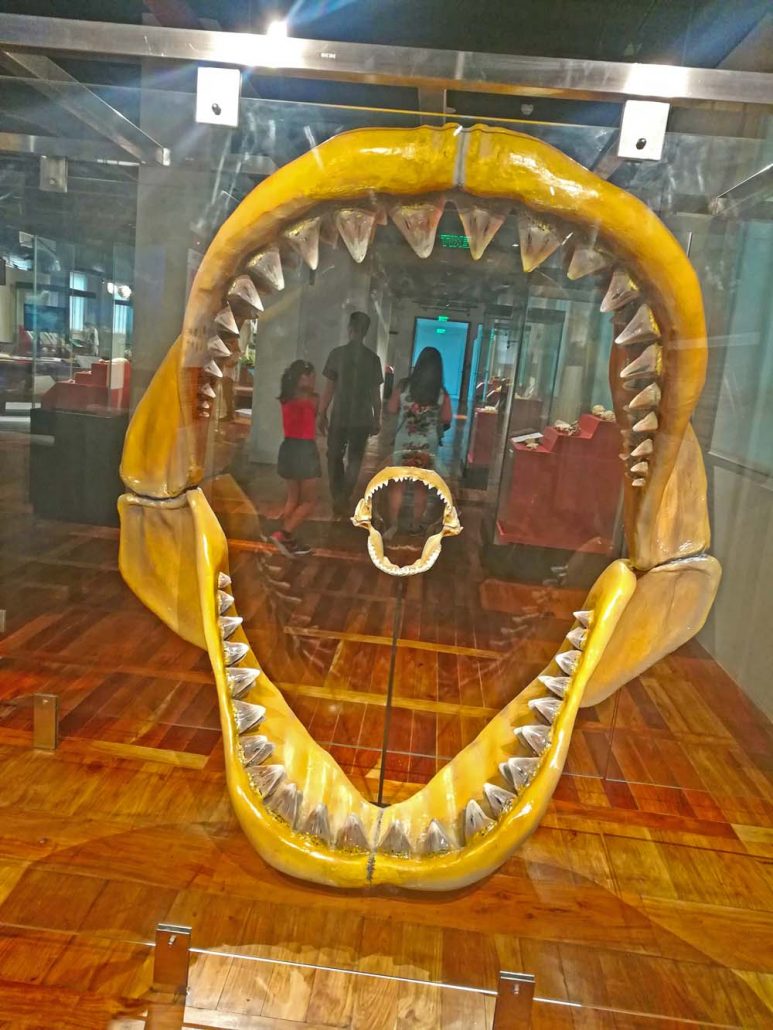
Awe-inspiring modern architecture inspired by the human deoxyribonucleic acid or DNA, life-size replicas of Tyrannosaurus rex skulls, Stegodon fossils excavated from the Kalinga province, the fearsome maw of a giant shark Megalodon, the taxidermied remains of six-meter mammoth crocodile Lolong – as a child who dreamed of being a paleontologist or a zoologist, the National Museum of Natural History would have blown my mind if I got the chance to visit it as a kid.

The National Museum of Natural History is sure to leave you dumfounded and amazed by its numerous interactive exhibits, its myriad archeological collections, and its evocative contemporary design. 
Remains of a six-meter crocodile, Lolong, the largest crocodile to be kept in captivity.
Inaugurated and opened to the public only last year, the six-storey National Museum of Natural History is a sight to behold. It is sure to leave from children to adults dumfounded and amazed by its numerous interactive exhibits, its myriad archaeological collections and its evocative contemporary design.
Formerly the Department of Tourism building – until the agency vacated the premises in 2015 to give way to renovations – it was rebuilt in the 1940s after being bombed during the Japanese-American War. Its façade and architecture still based on the pre-war plans of Filipino architect Antonio Toledo, in the neoclassical style.

The life-size replica of a Tyrannosaurus rex skull. 
Designed by Dominic Galicia Architects and interior designer Tina Periquet, the dome and its supporting structure have been dubbed the “Tree of Life”.
The edifice has since been revamped, with the introduction of a dazzling glass dome supported by a double helix obelisk inspired by the entwining of DNA. Designed by Dominic Galicia Architects and interior designer Tina Periquet, the dome and its supporting structure have been dubbed the “Tree of Life”, its tessellating pattern truly a mesmerizing spectacle especially when the sun hits its panels in the afternoon.
The National Museum of Natural History’s “Tree of Life” has also proven a popular photo-op spot. Tip: If you don’t want no photo-bombers behind you while you pose and if you don’t want to compete with other museum-goers for the perfect snapshot, visit the museum around lunch time when the foot traffic is most agreeable – by that time the morning tour groups have usually left and the afternoon visitors have yet to arrive.
Located along Agrifina Circle in Rizal Park, the National Museum of Natural History houses the exhibits and collections of the National Museum’s Zoology, Botany, Geology, and Archeology divisions.

Similar to the National Museum of Fine Arts, it is preferable to set aside an entire day if you want to truly take in everything the National Museum of Natural History has to offer – after all there are around a dozen galleries you need to visit inside the building, with subjects ranging from the country’s diverse marine life to taxidermy of endangered Philippine fauna and flora you’re not likely to see anywhere else (I saw what the critically threatened fluffy Panay Cloudrunner looks like in person for the first time), to semi-precious stones and wares unearthed from the archipelago’s mountainous regions.
All galleries in the National Museum Complex – the National Museum of Fine Arts, National Museum of Natural History and the National Museum of Anthropology, among them – are open from Tuesday to Sunday, 10 a.m. to 5 p.m. Admission is free.

An interactive life-size exhibit of rich Philippine marine life. 
The fearsome maw of a giant shark Megalodon – the size of a car – compared to the jaw of a modern-day shark.
Museums and Galleries Month 2019, with the theme “Building the Nation, One Exhibit at a time,” acknowledges the role of museums and galleries as instruments in creating national consciousness for Filipinos.
The Museums and Galleries Month (MGM) is observed every month of October by virtue of Presidential Proclamation No. 798, s. 1991. It underscores the importance of arousing national consciousness and pride in our rich Filipino culture and heritage embodying the aspirations of the nation, expressed in all media of art as well as historical and religious artifacts.
This rich Filipino cultural heritage embodies the aspiration of the nation. The observance recognizes that these cultural and art forms are necessary for nation-building and shaping the national destiny./PN



